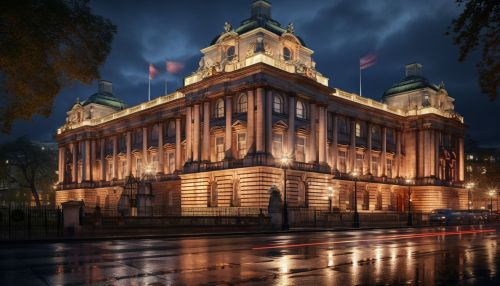British Admiralty
Origins and Early History
The British Admiralty, also known as the Office of the Admiralty and Marine Affairs, was the government department responsible for the command of the Royal Navy in the United Kingdom. Established in the early 18th century, it was the central authority for naval administration, a role it maintained until its dissolution in 1964.
The Admiralty's origins can be traced back to the medieval period, when England's naval administration was conducted by a variety of royal officers. These included the Lord High Admiral, the Clerk of the King's Ships, and the Keeper of the King's Ports and Galleys. Over time, these roles evolved and were consolidated into the Office of the Admiralty and Marine Affairs.


Structure and Functions
The Admiralty was headed by the First Lord of the Admiralty, a political appointment and member of the Cabinet. Under him were the professional naval officers, the Sea Lords, who were responsible for various aspects of naval administration and strategy.
The Admiralty was responsible for a wide range of functions, including the construction and maintenance of warships, the recruitment and training of sailors, the formulation of naval policy and strategy, and the administration of naval law. It also oversaw the Royal Marines, the naval intelligence service, and the Royal Naval Reserve.
Key Periods in Admiralty History
The history of the Admiralty is marked by several key periods. The first of these was the Napoleonic Wars, when the Admiralty, under the leadership of the First Lord, successfully directed the Royal Navy in a series of victories that established Britain as the world's dominant naval power.
The Admiralty also played a crucial role in the First and Second World Wars. In both conflicts, the Royal Navy, under the Admiralty's direction, played a vital role in maintaining sea lines of communication, conducting naval blockades, and supporting amphibious operations.
Dissolution and Legacy
In 1964, as part of a broader reorganization of the British government's defence apparatus, the Admiralty was merged with the War Office and the Air Ministry to form the Ministry of Defence. The Admiralty's functions were absorbed into the new ministry, and the position of First Lord of the Admiralty was abolished.
Despite its dissolution, the Admiralty's legacy remains significant. Many of its practices and traditions continue to influence the Royal Navy, and its historical records provide a valuable resource for the study of British naval history.
